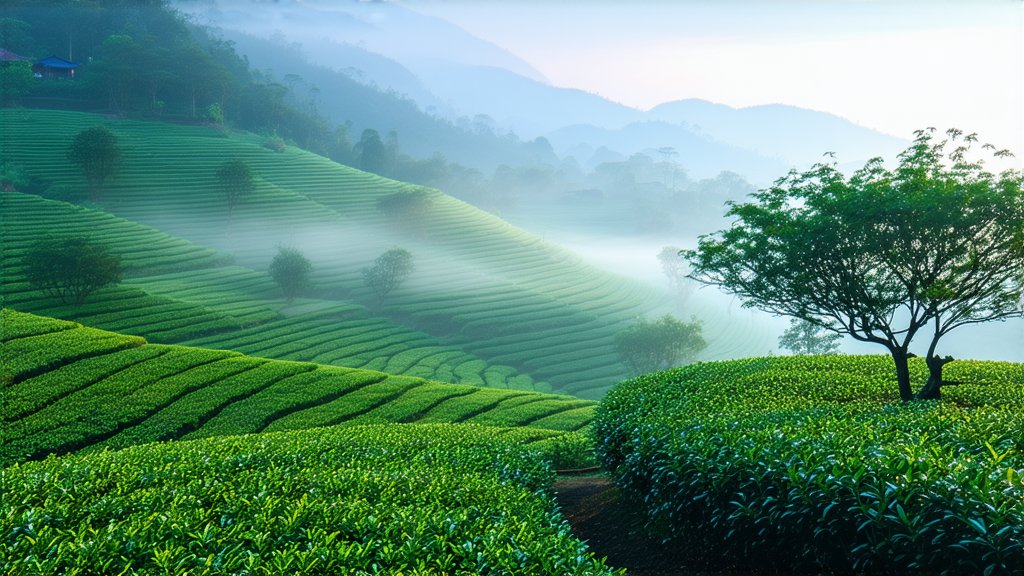
China, a land steeped in history and tradition, offers a plethora of cultural treasures, among which its tea culture stands as a testament to centuries of refinement and appreciation for nature's bounty. Among the myriad varieties of Chinese teas, oolong tea holds a special place, particularly the revered Tieguanyin (铁观音), a name that translates to "Iron Goddess of Mercy." This exquisite tea, hailing from the mountainous region of Anxi County in Fujian Province, is not just a beverage but an experience that encapsulates the essence of Chinese tea artistry.
Historical Roots
The origins of Tieguanyin can be traced back to the early 18th century during the Qing Dynasty. Legend has it that the tea was discovered by a poor scholar named Wang who found a wild tea plant growing on a cliff in Anxi. He nurtured the plant and propagated its leaves, which gained popularity due to their exceptional quality and unique flavor profile. Over time, Tieguanyin became synonymous with high-quality oolong tea, earning accolades both domestically and internationally.
Varieties and Cultivation
Tieguanyin belongs to the oolong tea family, characterized by its partially oxidized leaves, which impart a distinctive balance between the freshness of green teas and the richness of black teas. The cultivation of Tieguanyin requires meticulous care; it thrives best in the mineral-rich soil and cool climate of Anxi's highlands, where the misty mountains create an ideal microclimate. The tea bushes are typically pruned low to encourage dense growth and are harvested multiple times a year, with spring being the most prized season for its tender shoots and leaves.
The Art of Crafting Tieguanyin
The production of Tieguanyin is a labor-intensive process that involves several intricate steps:
- Withering: Freshly picked leaves are spread out under the sun or in shade to reduce moisture content slightly, allowing enzymes to initiate oxidation.
- Bruising: Leaves are tossed or gently rolled to break cell walls, facilitating enzymatic reactions and enhancing aroma development.
- Fixation: Heat is applied through pan-frying or baking to halt enzymatic activity, preserving the desired level of oxidation.
- Rolling: Leaves are shaped into tight balls or strips, further concentrating flavors and aromas.
- Drying: Finally, the tea undergoes a final drying phase to remove residual moisture, ensuring longevity and stability.
Each step demands precision and skill, reflecting the artisan's deep understanding of terroir and the delicate nature of the tea leaves.
A Symphony of Flavors: Tasting Tieguanyin
Tasting Tieguanyin is akin to embarking on a sensory journey. Its liquor, a golden-green hue, releases an enchanting bouquet reminiscent of orchids, creamy sweetness, and subtle fruity notes. The first sip unveils a complex interplay of flavors—floral, vegetal, and nutty—followed by a lingering aftertaste that dances on the palate. The mouthfeel is smooth yet robust, embodying the perfect harmony between astringency and sweetness.
To truly appreciate Tieguanyin, one must engage in the traditional Gongfu brewing method, which emphasizes control over water temperature (typically around 90°C), steeping time (short intervals of about 15-30 seconds), and the use of small Yixing clay teapots or Gaiwan. This ritualistic approach not only enhances the tea's flavors but also transforms the act of drinking into a meditative practice.
Conclusion
Tieguanyin is more than just a tea; it embodies the philosophy of harmony between man and nature, a reflection of China's profound connection to its land and heritage. Each cup tells a story of dedication, patience, and mastery, inviting connoisseurs worldwide to partake in this ancient tradition. As you savor every drop, let Tieguanyin transport you to the misty mountains of Anxi, where the whispers of history blend seamlessly with the tranquility of nature's finest creation.